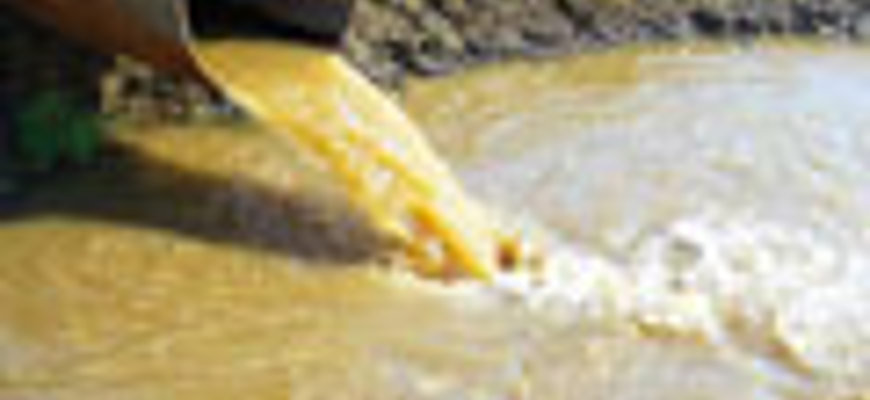Land risks and client value

Why is 14 July 2000 a significant date for property lawyers working in Scotland? That was when the principal control over contaminated land (Part IIA Environmental Protection Act 1990, inserted by Environment Act 1995) came into force. This was only three months after the same control had come into force in England and in fact two months before it came into force in Wales. It can therefore be said, first, that in legal terms, contaminated land issues have broadly the same significance in Scotland as they do in England & Wales; secondly, that the potential for liabilities to arise from contaminated land has been known (actually or constructively) to Scottish property lawyers for over 10 years.
Public awareness
Over the last 10 years, the public profile of environmental issues has grown considerably in Scotland, as in the rest of the UK. Few people taking an interest in world events can fail to be aware of the potential dangers of global warming. The effect of extreme weather events around the world assails us almost on a daily basis. Phrases such as “sustainable development” and “zero waste” have become well known in many areas of business life.
On the back of this increasing awareness, case law has developed involving contaminated land and other environmental problems. This year, Corby Borough Council concluded an out-of-court settlement of over £14 million with a number of claimants concerning birth defects allegedly attributable to contamination on the former steelworks site. In Scotland, residents on a Lanarkshire Housing Association site in Motherwell are taking proceedings alleging health problems associated with the site’s former industrial use.
Given these strong developments in both the law and client awareness, property lawyers in Scotland should be adding value to the service they offer by informing their clients about relevant environmental risks, in both commercial and residential transactions. In both instances, environmental issues can have a very significant effect on the value and usability of property.
Contrasting approaches
In 2001, the Law Society of England & Wales issued a warning card to the profession saying: “Solicitors should be aware that environmental liabilities may arise and consider what further enquiries and specialist assistance (both legal and technical) the client should be advised to obtain.”
It is notable that this advice was given across the board to all solicitors, whether working in large commercial firms or High Street practices.
The Law Society of Scotland has taken a more defensive position, advising residential practitioners to remove environmental issues from the scope of their terms and conditions of engagement. No advice has been issued specifically for commercial property transactions.
At Dundas & Wilson, we have taken the view for several years that our clients are entitled to expect the same levels of expertise and quality of service in Scotland as we offer from our office in London. The underlying environmental issues are identical on both sides of the border, as are the financial and reputational consequences of ignoring those issues. Client awareness and commercial expectations are very much the same too. Many of our clients have interests throughout the UK and expect risk management to be conducted on a consistent basis. Consequently, environmental risk in transactions is managed in the same way wherever our client is based and wherever the property concerned is situated.
Our normal approach is to ensure that at least a basic level of environmental information is made available to inform the transaction and its terms. A variety of environmental database searches are available covering property in Scotland and these can be ordered conveniently through property search companies. For the solicitor without specialist knowledge of environmental issues, types of reports are available which include a basic level of advice suitable for being passed on to the client. If further advice is required, there are a number of environmental lawyer specialists who can be called on to help.
Added value
Environmental desktop searches are now available covering flood risk as well as information on site history, proximity of watercourses, underlying geology and other factors that inform contaminated land risk. The increased incidence of flooding throughout the UK is clear to all, and more frequent and severe flooding is expected due to climate change. Consequently, solicitors should be obtaining flood risk desktop reports alongside contaminated land risk reports.
Given that environmental risk issues, client awareness and the main areas of law are not significantly different in Scotland compared to England & Wales, it is certainly best practice to adopt this approach. Arguably, solicitors in Scotland may also consider this approach necessary in order to discharge their professional duty to their clients. At the very least, it is an expression of added value to clients and a useful differentiator in times of increasing competition from other professions.
- Mark J Brumwell is a partner and Head of the Environment Group, Dundas & Wilson LLP
In this issue
- The renaissance of Scottish arbitration
- EU Civil Justice Supplement
- Home of innovation
- Life at the sharp end
- Will you still need me?
- Standovers stood down
- Nasty medicine
- Surprise results?
- Business leads
- Green growth
- Child's play?
- Law reform update
- Approval of our peers
- A two-in-one measure
- Society and LBC launch business support package
- Ask Ash
- Paper, pixel and process
- It could happen to you
- The good and the bad
- Voyage of the endeavour
- Keeping an eye on the competition
- Courting controversy
- Parting: such sweet sorrow?
- Website review
- Book reviews
- All change for annual conference
- Wriggle room?
- Land risks and client value






